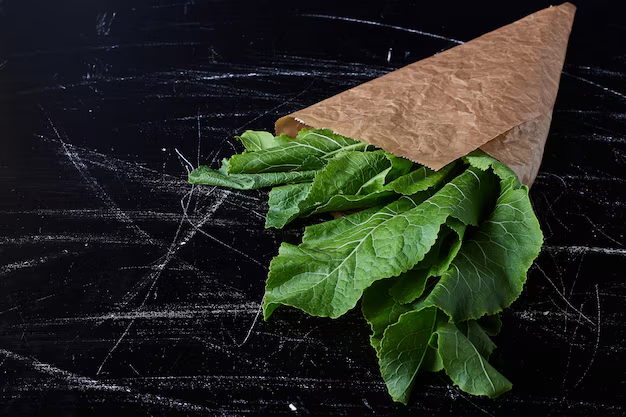The Ultimate Guide to Keeping Kale Fresh in Your Refrigerator
Kale, with its vibrant green leaves and numerous nutritional benefits, has become a popular staple in the health-conscious kitchen. Yet, it’s not uncommon for those freshly bought bunches to wilt or turn soggy long before you’re ready to use them. In today's article, we'll dive into practical strategies to keep your kale fresh in the refrigerator for as long as possible. Whether you love to add it to your morning smoothies, create vibrant salads, or use it as a side dish, keeping your kale crisp and fresh is crucial. Let's explore this leafy wonder and how best to store it.
🥬 Understanding Kale's Shelf Life
Before diving into storage techniques, it’s key to understand what affects kale’s freshness. Kale is a hardy green, part of the cruciferous vegetable family, which naturally lasts longer than other leafy greens like spinach or lettuce. However, kale's longevity can be compromised by moisture, air exposure, and improper storage.
Factors affecting kale's freshness:
- Moisture: Excess moisture can cause the leaves to rot.
- Air exposure: Leads to wilting and loss of crispness.
- Temperature: Kale prefers cooler temperatures to stay fresh.
Understanding these elements helps provide a foundation for effective storage.
📦 Effective Storage Techniques for Kale
Cleaning and Prepping
Step 1: Inspect and Clean Start by inspecting the kale for any leaves that may be damaged or wilting. It's best to remove these to prevent them from affecting the rest of the bunch.
Step 2: Don't Wash Immediately Contrary to popular belief, washing kale before storage might hasten spoilage. Instead, save washing for just before you're ready to use it. If you must wash first, ensure leaves are completely dry before storing.
Wrapping and Container Choices
Step 3: Paper Towels and Bagging Wrap the kale loosely in paper towels. This will help to absorb any excess moisture while maintaining a humid, yet not too wet environment. Place the wrapped kale in a perforated plastic bag or a produce bag.
Step 4: Airtight Containers Alternatively, consider placing the kale in an airtight container lined with paper towels. This method is effective at controlling moisture levels.
Refrigerator Placement
Step 5: Chill Out Store kale in the crisper drawer of your refrigerator, which is specifically designed to maintain optimum humidity for fruits and vegetables. Keep the drawer set to a high humidity level to extend kale's freshness.
❗ Key Takeaways for Storing Kale
- Keep leaves dry until ready to use.
- Wrap with paper towels to absorb moisture.
- Use perforated bags or containers.
- Store in a high humidity crisper drawer.
🌱 Exploring Types of Kale for Storage
Not all kale varieties are created equal when it comes to storage longevity. Here are a few common types and some tips for keeping them at their best:
Curly Kale: Known for its frilly leaves, it's one of the most common and versatile types. The same storage methods apply, but its hardy structure can often withstand longer periods without wilting.
Lacinato Kale (Dinosaur Kale): With a more robust texture, this type often lasts a bit longer in the fridge, benefiting from the same wrapping and storage techniques.
Red Russian Kale: More delicate in texture, this kale type needs gentle handling and careful moisture management.
Understanding these differences can inform your purchase decisions based on how frequently you cook with kale.
👩🍳 Practical Tips for Using Kale Efficiently
You've stored your kale correctly, but using it efficiently is equally important to avoid waste.
Meal Prep and Planning
Batch Cooking
- Use kale in a bulk recipe that you can eat throughout the week, such as soups or stews. This means not just saving your kale but also time and effort.
Smoothie Prep
- Chop kale into smoothie-sized portions and store them in freezer-safe bags. Having kale prepped and ready to go will make your morning routine easier and ensure nothing goes to waste.
Preservation Ideas
Freezing Kale If you find that you're not able to use your kale before it starts to age, consider freezing it. Blanch the kale leaves quickly in boiling water, plunge them into ice water, dry thoroughly, and freeze in airtight bags. This process extends kale’s shelf life phenomenally without sacrificing nutritional value.
🍽️ Beyond the Refrigerator: Alternative Storage Solutions
While the refrigerator is the primary location for storage, alternative methods can help you maximize your kale's potential.
Fermentation
Fermentation is not only a preservation technique but also enhances the nutritional profile of kale. Making kale kimchi or sauerkraut can offer a flavorful twist to how you consume your greens.
Dehydration
Dehydrated kale chips are a tasty snack. They harness the same durability for storage, offering a nutritious alternative to regular chips.
Quick Reference: How to Keep Kale Fresh in Your Fridge
Here's a quick summary to keep at hand:
- 🌿 Dry it: Don’t wash before storing.
- 📦 Wrap it: Use paper towels and an appropriate container.
- 🧊 Chill it: Keep in the fridge's crisper drawer.
- 🥤 Prep it: Chop and freeze for smoothies.
- ❄️ Preserve it: Try blanching and freezing excess supplies.
Embrace the Green
Keeping kale fresh in the refrigerator might require a bit of initial setup but delivers significant returns in flavor, nutrition, and prolonged use. The nutrient-rich profile of kale makes the investment in time worthwhile. By integrating these practices into your routine, you'll not only maintain kale’s freshness but also help reduce food waste, promote sustainability, and forever change how you engage with this superfood. With these strategies, you're set to enjoy kale at its best in every recipe you try.
